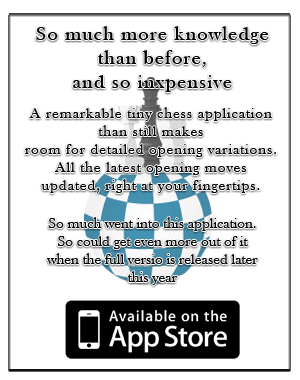World Chess Championship 2000
C. Abundo Chief Arbiter reported on the World Chess Championship
A few months after his World Cup victory, Viswanathan Anand became the 15th World Champion, besting the world’s top 100 players in a grueling month-long series of knockout matches in the 2000 World Championship held 27 November to 17 December in New Delhi, India followed by the finals, 19-27 in Teheran, Iran.
In the FIDE spirit, I operated on the basis of consensus among the Arbiters. At the Arbiters meeting, we decided to make the number of blitz tie-break games clear at a maximum of four games, instead of open ended pending the Arbiter’s decision.
In New Delhi, I conducted the players’ meeting simultaneously for both the men and women. After a half hour, the meeting concluded without any questions from the players. Still, I was careful to avoid the Istanbul Olympiad fiasco of stopping and replaying the games due to failure of the electronic board system. I repeated instructions before the start of each round based on my experience managing the successful World Cup live Internet broadcast in Shenyang earlier this year.
The night before the first round in Delhi, we were monitoring the airport because the flight from Moscow carrying many players was much delayed. Almost all the Russian players were on the flight arranged by Alexander Bach, whose travel agency services most chess players flying from Moscow.
When the FIDE President arrived in New Delhi, he saw that FIDE was given less prominence than local sponsors. At the opening ceremony, the FIDE President, who personally donated the $3.5 million prize fund and more, rightfully insisted that FIDE should be first named. FIDE Vice President P.T. Ummer Koya announced due credit to His Excellency Kirsan Ilyumzhinov and FIDE, and after the ceremony it was agreed to redesign the banners to place the FIDE logo at the top followed by announcement of NIIT as sponsor and the AICF as host.
Together with Union Minister for Youth Affairs and Sports Ms. Uma Bharati, All India Chess Federation President Dhruv M. Sawhney, the FIDE President inaugurated the championship. The opening ceremony poolside banquet was marked by firecracker displays and folk dances.
I prepared two possible color variations for the first round. The draw for one exemplary match would decide which color variation applied. Others were managing the opening ceremony. I had two envelopes prepared for the first draw to determine which player would be the one to choose in the second draw. I tried to explain the procedure to the ceremony organizers but it was impossible to explain to a non-chess player. During the tournament, I instructed the Deputy Arbiters to conduct the draw in the time-honored tradition of having one player hold out both clenched fists each concealing either a white or black pawn, for the other player to choose. Fair and square.
Anand was the pre-tournament favorite over highly rated rivals. Almost all top players participated, with the exception of Kasparov, Kramnik and Karpov.
“It’s good to be playing in India. But even when you play at home, you still have to prepare and beat your opponents,” said Anand with his sense of humor. “There is a lot of pressure but there also is a lot of warmth, so it balances out,” he confided to this writer. “I wish I could play more often here,” he added.
Venue was the Hyatt Hotel, a 5-star hotel in the heart of New Delhi. Games would be broadcast live on the Internet. To avoid a repetition of the problems that plagued the Istanbul Olympiad, the Elista software was used complete with real-time clock display which was missing in Las Vegas.
An organizing committee was supposed to make advance arrangements but most of the work was done by Koya and the All India Chess Federaiton. Both men’s and women’s events were to be held in the same hall. When I inspected the hall, the organizing committee had placed kiosks inside for serving coffee with cups and saucers, etc. which would have made it the noisiest playing hall ever. I immediately ordered them placed just outside the hall. Nothing was arranged for the score sheets either and I had to design one quickly. There was also no official wall clock and I had to order one.
No arrangements were made for demonstration boards or monitors. In the early rounds, the hall was too crowded to accommodate spectators without these. In all tournaments I have officiated as Chief Arbiter, I tried to arrange the hall in such a way that spectators could follow all games. Whereas there were hardly any spectators at the previous men’s world championship in Las Vegas, there were several hundreds daily in New Delhi, and the playing hall arrangement, or lack of it, posed a major problem.
As Chief Arbiter, I insisted and showed how TV monitors could be added. This was done starting the third round. I arranged it in such a way that spectators could follow all games. Thereafter, crowd control was manageable.



